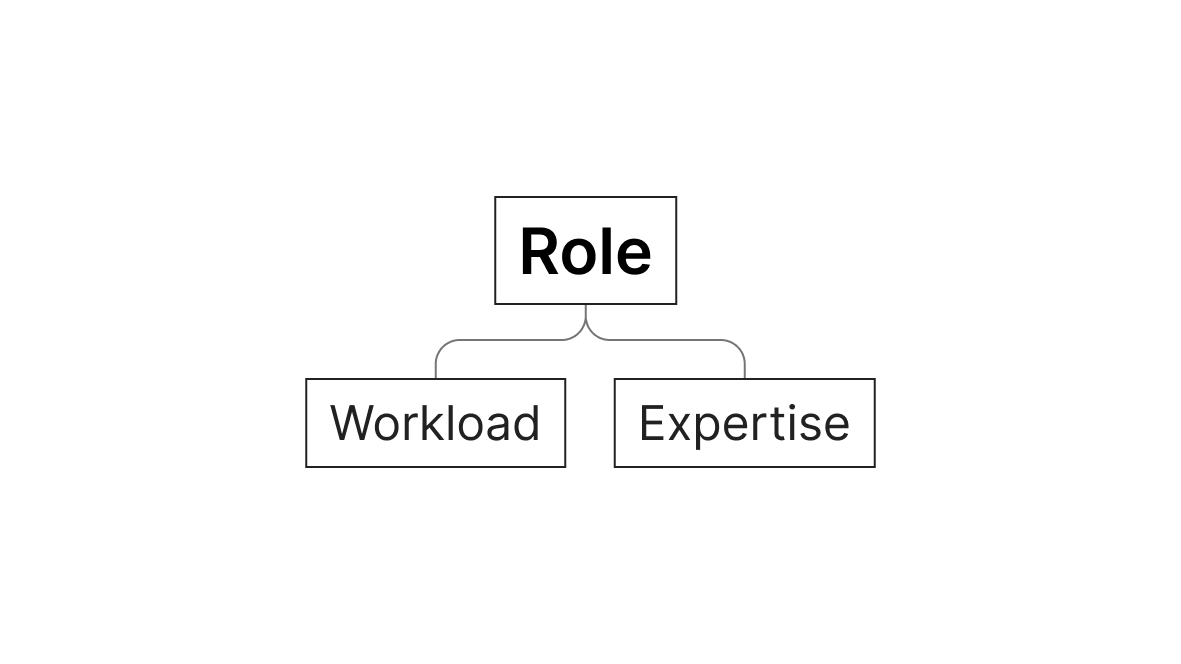Space Race
Participants are tasked with navigating their spacecraft as far as possible within 5 minutes without losing any critical systems. Participants must use a manual and data visualization to inform their decision making and carry out these actions by manipulating a physical instrument panel. By managing their resources and stabilizing any off-nominal activity, participants attempt to take the spacecraft further than any previous crew.
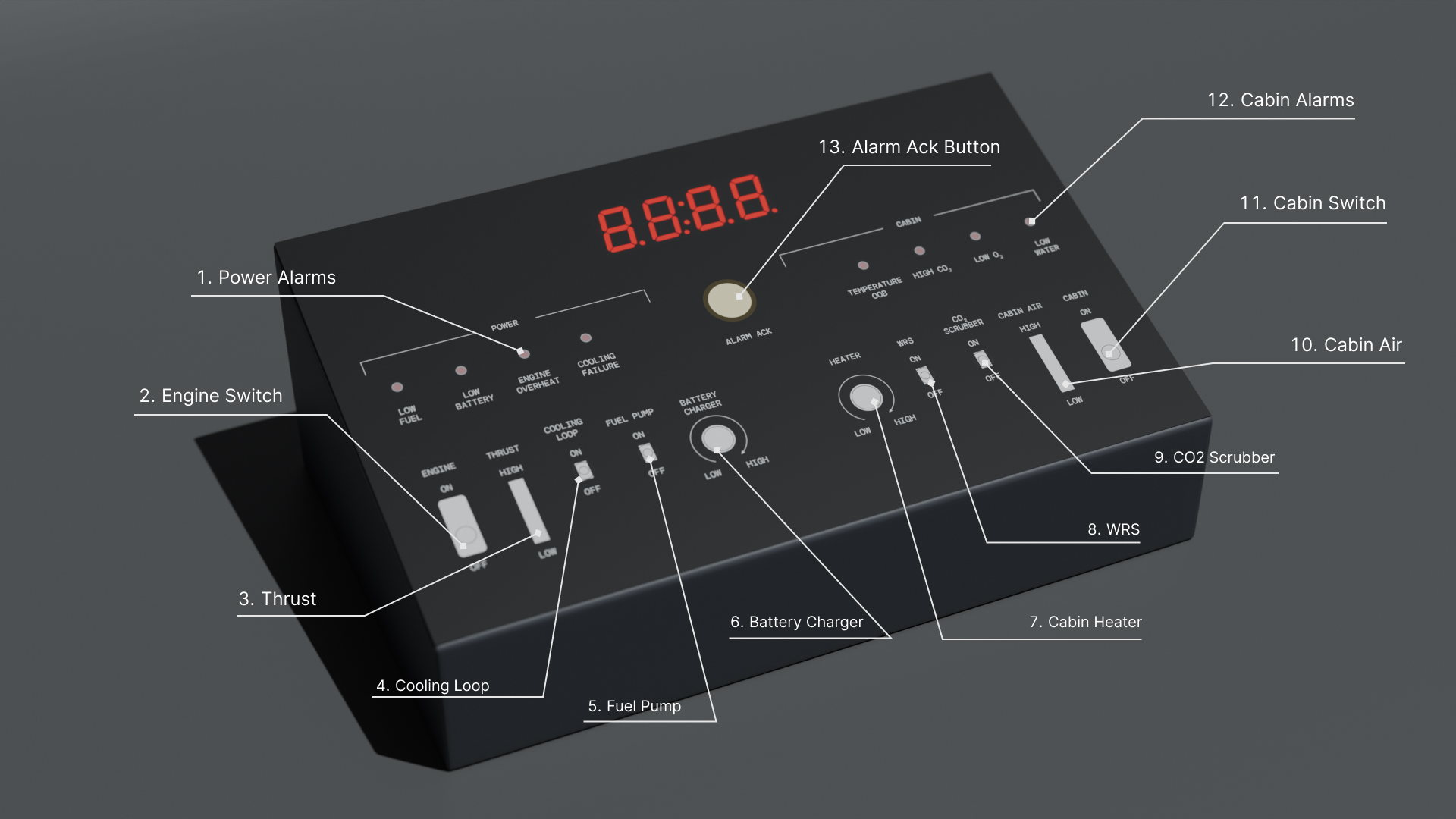
How to Play Space Race
Read Space Race Manual ↗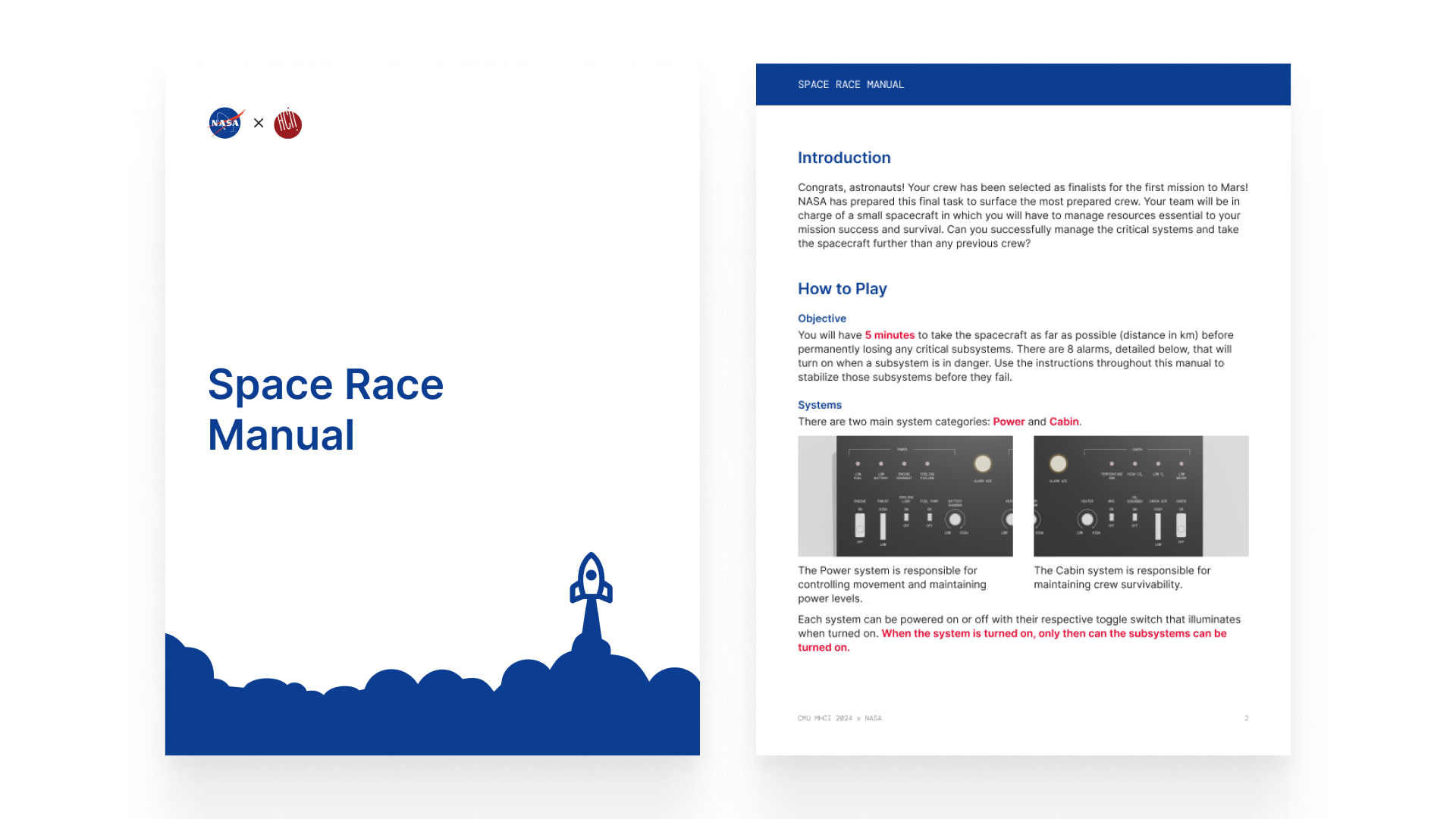
① Read the manual
Players must first take 10 minutes to familiarize themselves with the system and its relationships
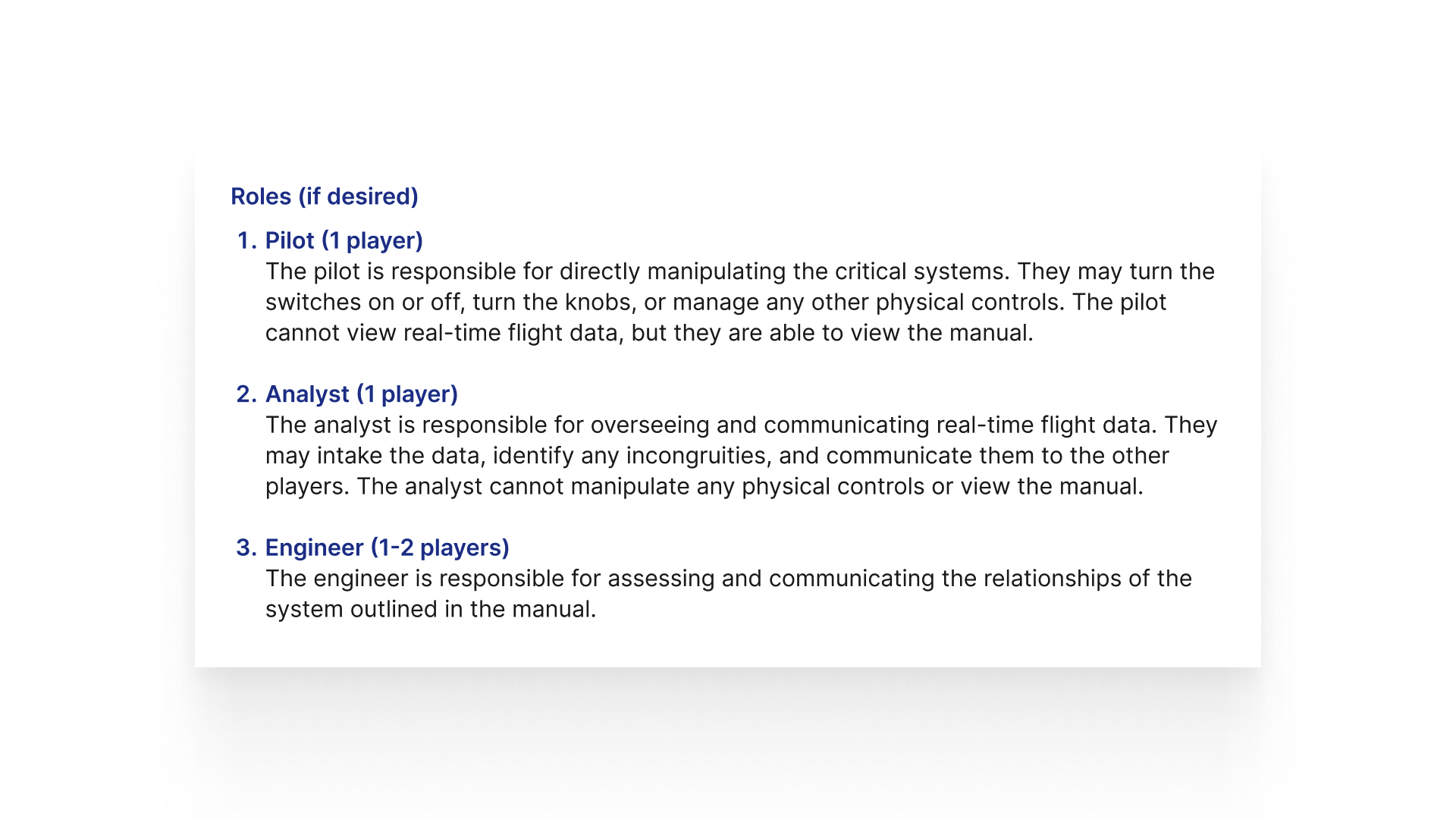
② Select roles (if desired)
Depending on the research objective, players may select roles as outlined in the manual. However, in certain circumstances, team roles may not be desired.
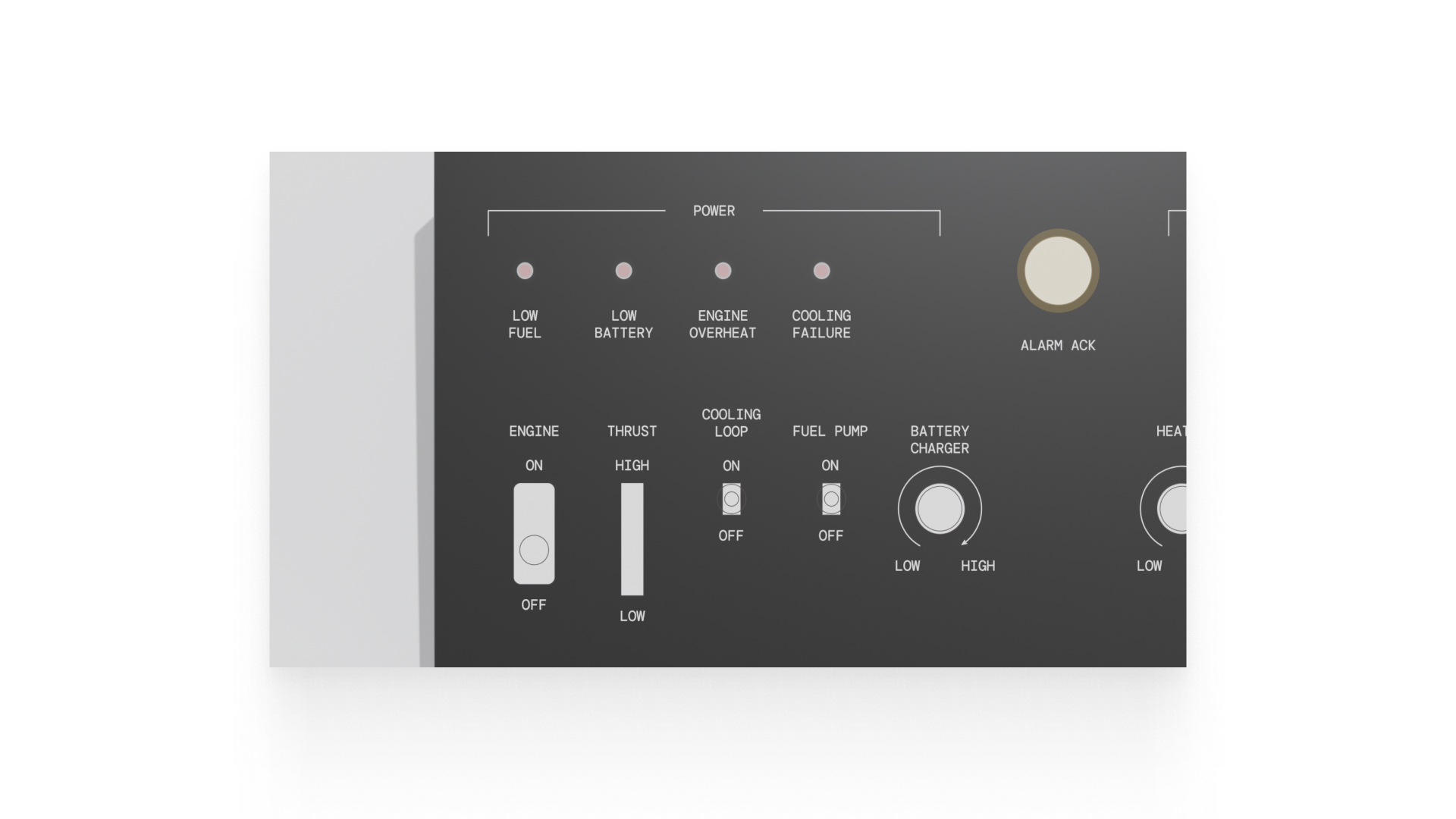
③ Set all instrument panel inputs to 0
Turn off all toggle switches and set the potentiometers to 0. This will allow each team to begin at the same point.
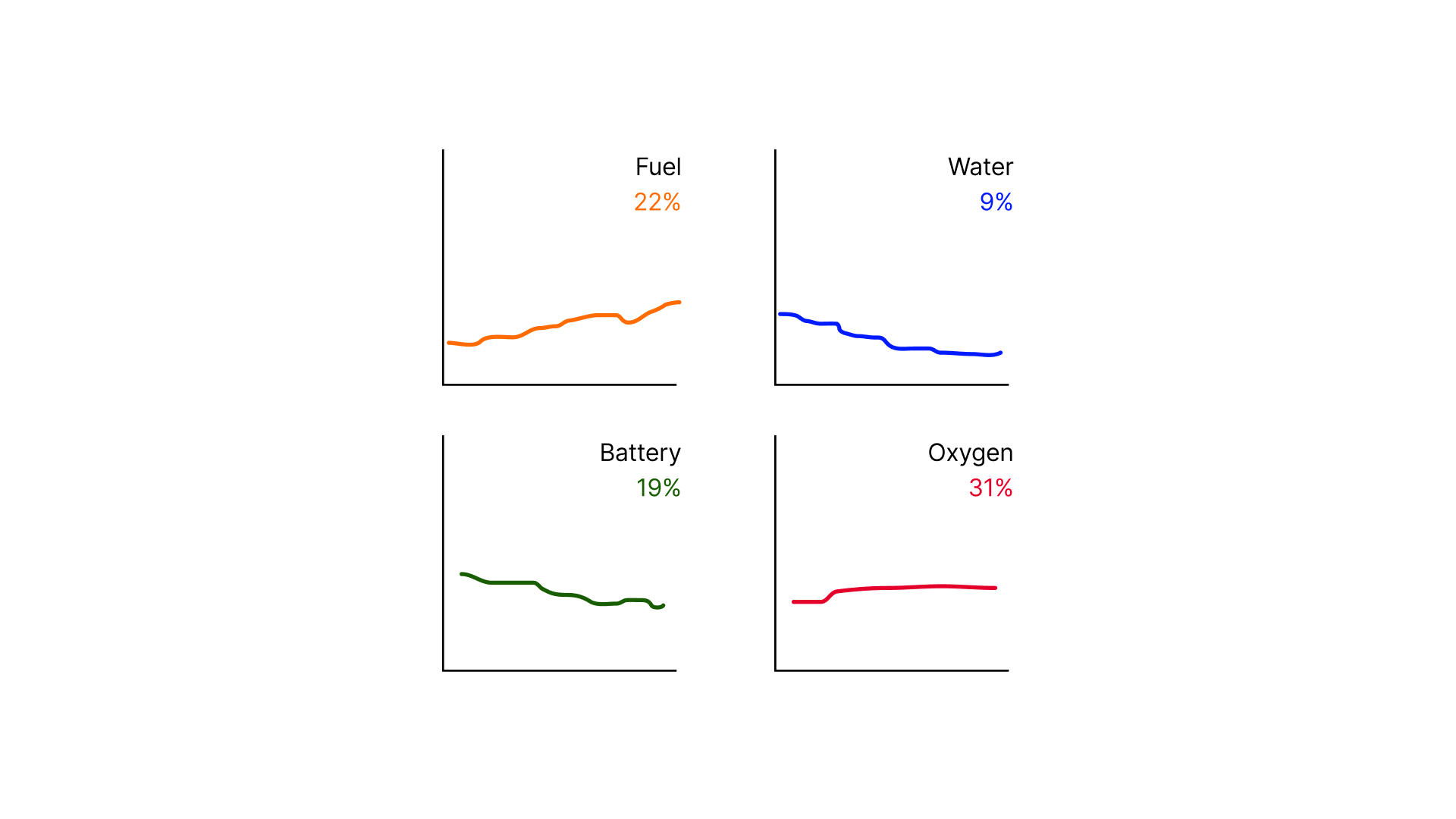
④ Load the data visualization file
Turn on the game and load the ‘Space Race Data Visualization’ file.
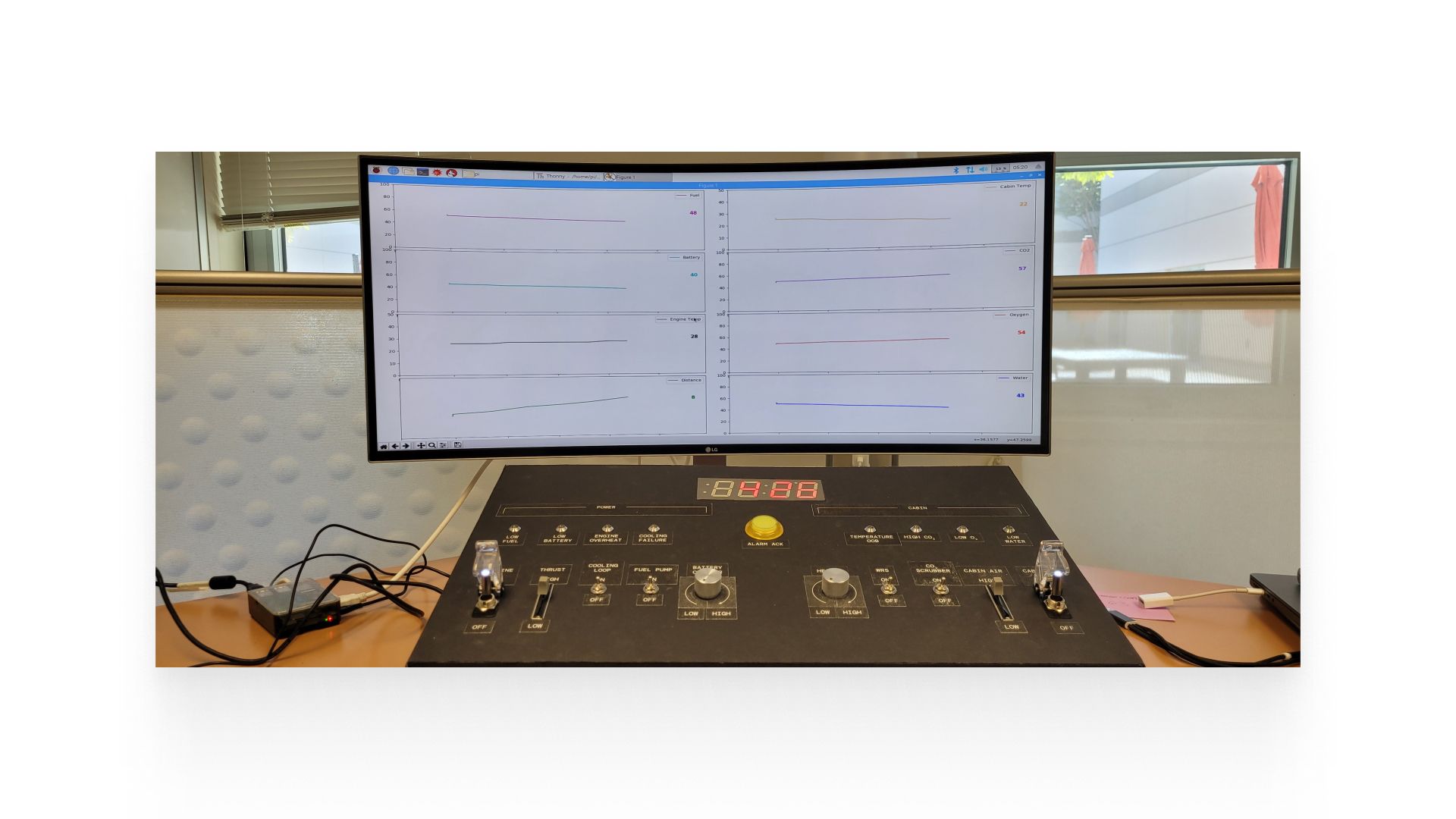
⑤ Start!
Begin the game.
Space Race is a living example of tasks created from M.A.S.T.
Creative and Systematic Thinking
We created a system of components that each have their individual functionality, but work together for a bigger purpose: to travel as far as possible.
Players can come up with creative solutions to achieve their goals. When an error occurs in the system, players have to identify the possible cause through systematic thinking.
"I think it reflects the nature of a complex system which is...you do have to be intuitive sometimes and think on your feet."
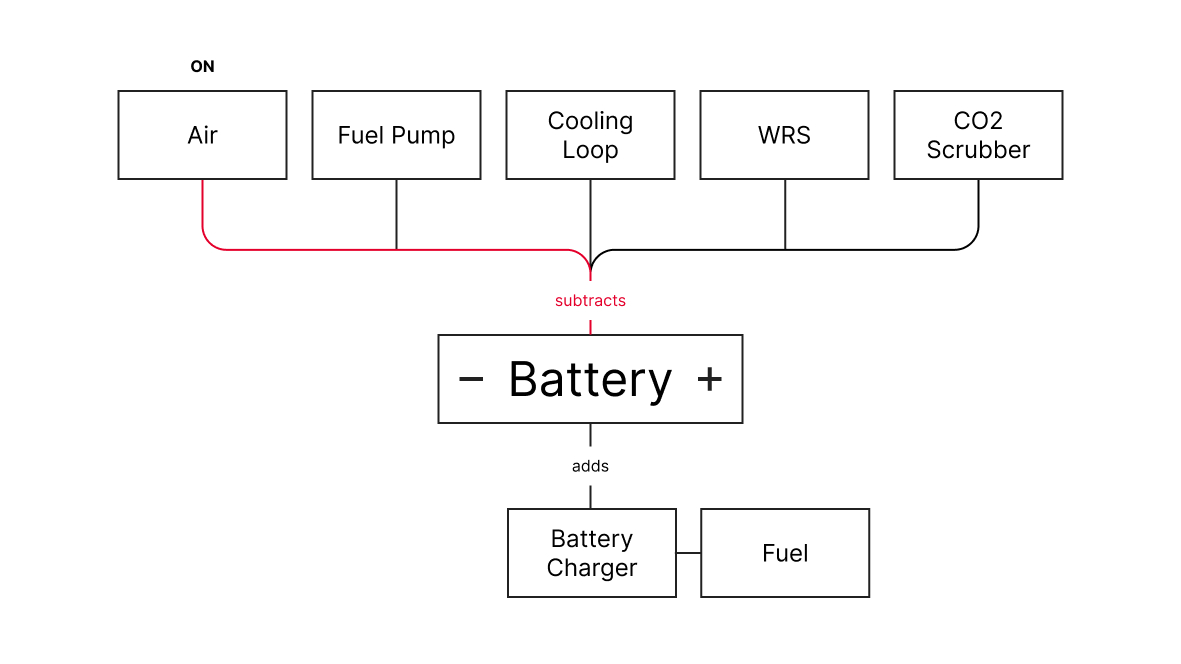
Cascading Problems
Because of how the systems are interconnected, problems could easily cascade. In addition, we made it so that certain issues will get more drastic the longer it goes unnoticed.
"We're gonna fail, we're gonna fail!"
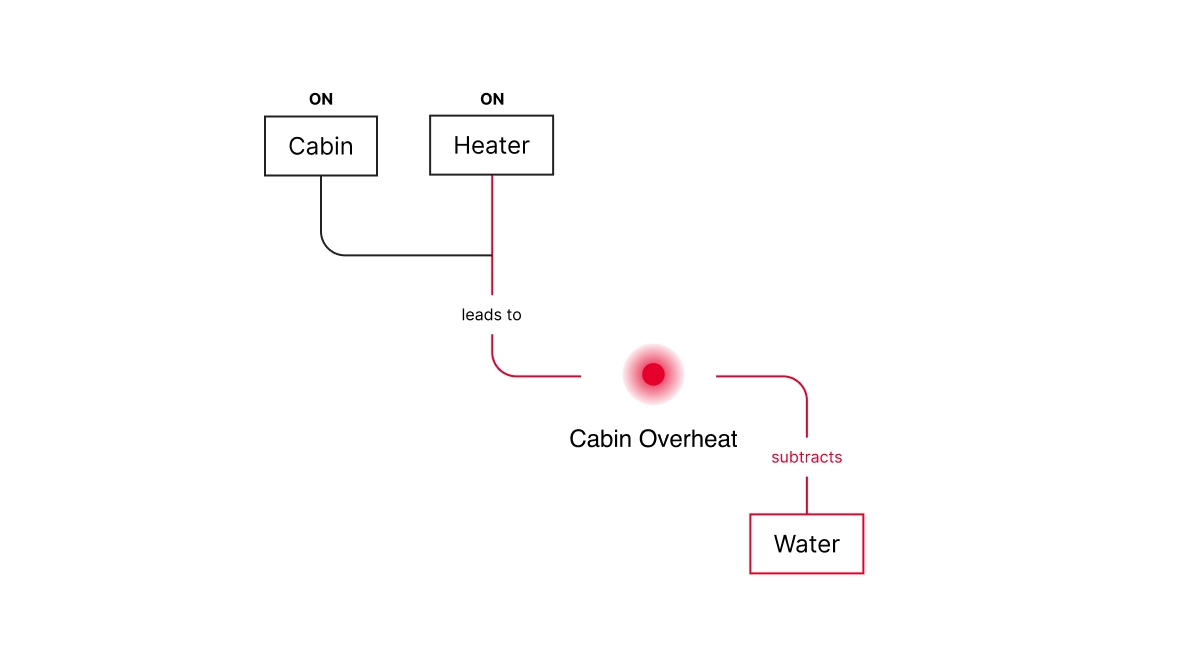
Multiple Stressors
In addition to the stress of having to maintain the systems, we introduced a time stressor and audio warning sounds on top of visual signals.
"I'm losing water fast...we need to turn on water!"
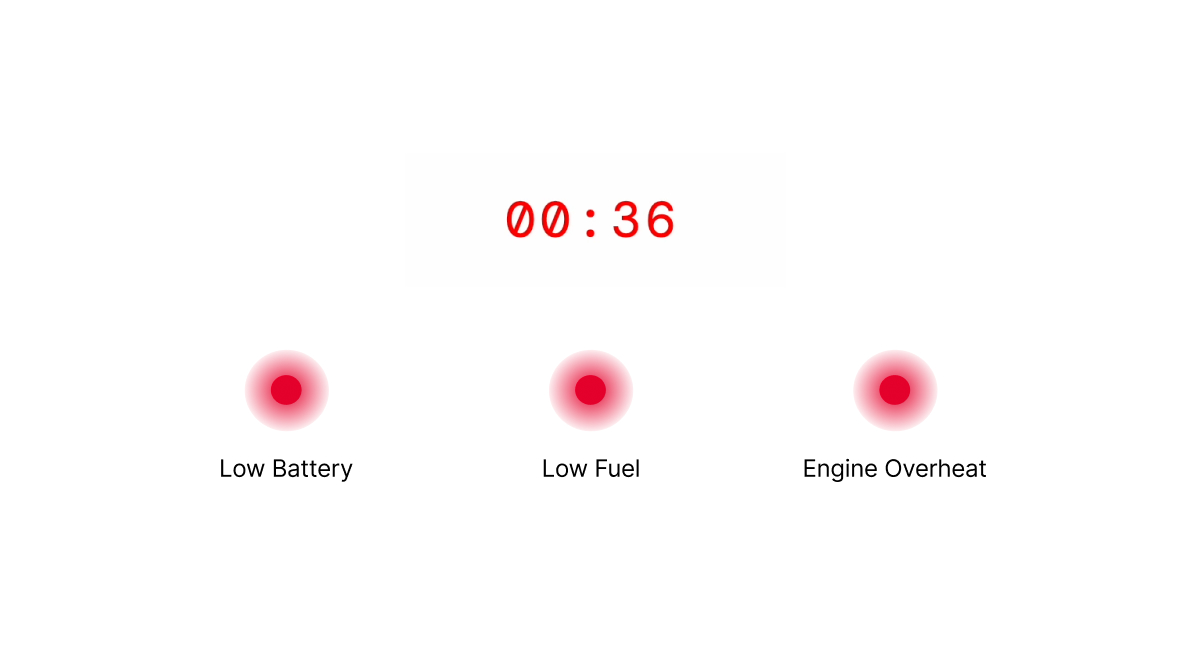
Information Prioritization
By providing data visualization, players would be able to diagnose which was the most critical issue at hand.
"Splitting tasks between two people helped limit the amount of information to pay attention to at once"
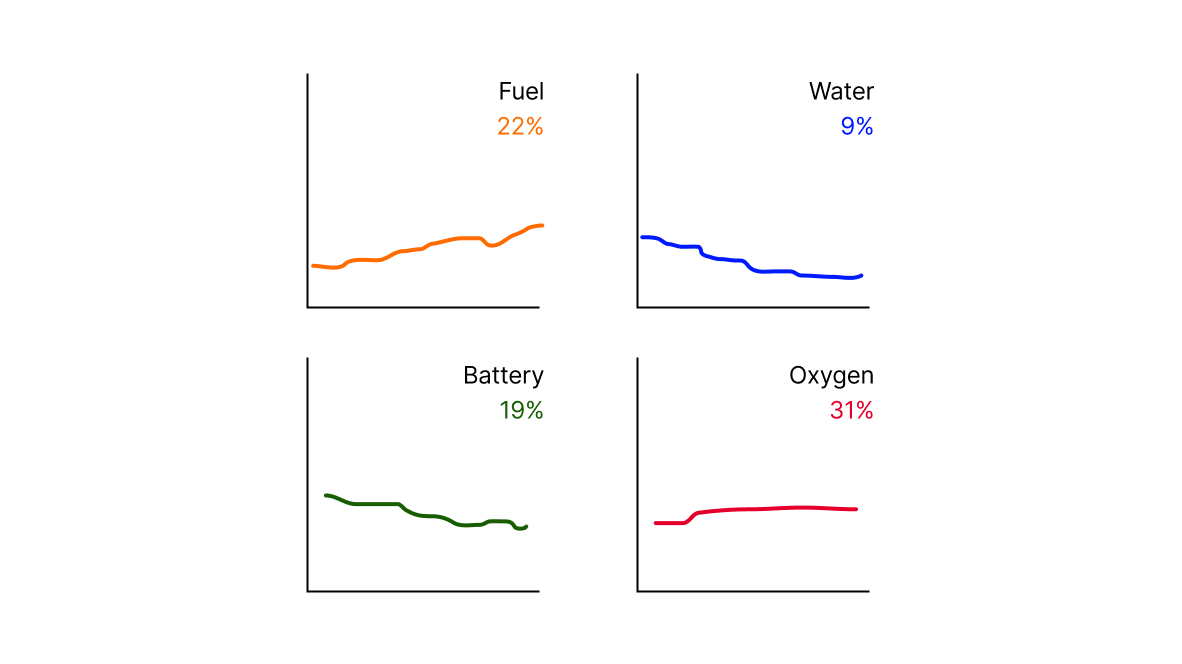
Built for Teams
Based on the workload and expertise, we divided the game into three roles: Pilot, Engineer and Analyst. This is to ensure that teamwork was necessary to successfully complete the task, and that each player had less information to digest pre-game.
"I wish my teammate communicated more than [they] did"
